
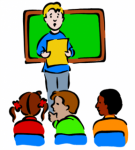 For many of us, the colder weather has started to arrive and mid-year assessment is in full swing. Teachers are under the pump to produce mid-year reports and grades. The OpenSTEM® Understanding Our World® program aims to take the pressure off teachers by providing for continuous assessment throughout the term. Not only are teachers continually kept appraised of students’ progress towards meeting the learning goals for the term, they can also provide timeous feedback to students, allowing them to reach those goals more effectively. The Understanding Our World® units are also curriculum aligned, and each curriculum strand is matched through each section of the model answer to the assessment guide, which provides a grading schedule and vocabulary to describe each student’s progress through the core curriculum areas. Thus, teachers need only to collate this information for each student in order to populate the reports.
For many of us, the colder weather has started to arrive and mid-year assessment is in full swing. Teachers are under the pump to produce mid-year reports and grades. The OpenSTEM® Understanding Our World® program aims to take the pressure off teachers by providing for continuous assessment throughout the term. Not only are teachers continually kept appraised of students’ progress towards meeting the learning goals for the term, they can also provide timeous feedback to students, allowing them to reach those goals more effectively. The Understanding Our World® units are also curriculum aligned, and each curriculum strand is matched through each section of the model answer to the assessment guide, which provides a grading schedule and vocabulary to describe each student’s progress through the core curriculum areas. Thus, teachers need only to collate this information for each student in order to populate the reports.
 Students in year levels from Foundation (Kindy/Prep) to Year 3 work through curriculum-aligned sections of work throughout the term and are assessed through a variety of interactions, which include students’ verbal and written responses, as well as drawings and craft projects completed as part of the term work. Students in Years 4 to 6 usually have one main project or summative assessment piece for the term. However, the student workbook provided with each unit is structured to step students through the formative process of completing this work over several weeks, allowing teachers to keep track of their progress and provide regular feedback. The assessment guide provided with each unit, guides teachers on how to assess the assessment piece (as well as the rest of the term work, including the student workbook), as well as providing a marking rubric and vocabularies for students’ achievements from A to E.
Students in year levels from Foundation (Kindy/Prep) to Year 3 work through curriculum-aligned sections of work throughout the term and are assessed through a variety of interactions, which include students’ verbal and written responses, as well as drawings and craft projects completed as part of the term work. Students in Years 4 to 6 usually have one main project or summative assessment piece for the term. However, the student workbook provided with each unit is structured to step students through the formative process of completing this work over several weeks, allowing teachers to keep track of their progress and provide regular feedback. The assessment guide provided with each unit, guides teachers on how to assess the assessment piece (as well as the rest of the term work, including the student workbook), as well as providing a marking rubric and vocabularies for students’ achievements from A to E.
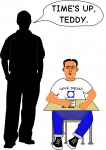 Continuous assessment is widely recognised internationally as promoting “inclusive and equitable quality education”. A UNESCO report from August 2017 describes the advantages of continuous assessment for teachers, students, parents and other “education actors”. It includes statistics on how it has improved student engagement, confidence and performance, whilst improving the teaching-learning process. The impact of the shift to continuous assessment is particularly marked when applied to lower performing schools and students, where performance increases significantly once continuous assessment is used. Studies from countries in Africa, including Zambia, have shown that students’ performance and engagement were greatly increased after continuous assessment was introduced. On a global scale, continuous assessment has been shown to improve outcomes for students, parents, teachers and education systems as a whole, especially in the vital area of fostering critical 21st Century competencies. Continuous assessment has been shown to “improve overall quality and equity in education delivery and outcomes”. Feedback – from teachers to students, from students to each other, from teachers to parents and also within the education system itself, is a critical component of this success.
Continuous assessment is widely recognised internationally as promoting “inclusive and equitable quality education”. A UNESCO report from August 2017 describes the advantages of continuous assessment for teachers, students, parents and other “education actors”. It includes statistics on how it has improved student engagement, confidence and performance, whilst improving the teaching-learning process. The impact of the shift to continuous assessment is particularly marked when applied to lower performing schools and students, where performance increases significantly once continuous assessment is used. Studies from countries in Africa, including Zambia, have shown that students’ performance and engagement were greatly increased after continuous assessment was introduced. On a global scale, continuous assessment has been shown to improve outcomes for students, parents, teachers and education systems as a whole, especially in the vital area of fostering critical 21st Century competencies. Continuous assessment has been shown to “improve overall quality and equity in education delivery and outcomes”. Feedback – from teachers to students, from students to each other, from teachers to parents and also within the education system itself, is a critical component of this success.
 The authors of the UNESCO report warn that “high-stakes, large-scale, annual and multi-annual instruments” of assessment “threatens education” and “continues to favour information over knowledge, and mechanical skill over practical application”. Continuous assessment is also in line with the suggestions in the Gonski 2.0 report. It is perhaps apposite to mention that the Queensland government is currently undertaking a review of NAPLAN and is looking for survey responses. Click on the link provided to take part.
The authors of the UNESCO report warn that “high-stakes, large-scale, annual and multi-annual instruments” of assessment “threatens education” and “continues to favour information over knowledge, and mechanical skill over practical application”. Continuous assessment is also in line with the suggestions in the Gonski 2.0 report. It is perhaps apposite to mention that the Queensland government is currently undertaking a review of NAPLAN and is looking for survey responses. Click on the link provided to take part.

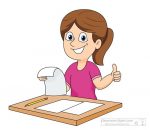 OpenSTEM would like to extend warm congratulations to all teachers on Teachers’ Day!! We salute you all for the wonderful job you do for all students every day, often without thanks or praise. It is not lightly that people say “If you can read this, thank a teacher”. Teachers truly are the force that shapes the future and can set people on a positive track for life. Your influence is lifelong and all-encompassing.
OpenSTEM would like to extend warm congratulations to all teachers on Teachers’ Day!! We salute you all for the wonderful job you do for all students every day, often without thanks or praise. It is not lightly that people say “If you can read this, thank a teacher”. Teachers truly are the force that shapes the future and can set people on a positive track for life. Your influence is lifelong and all-encompassing. Well done to you all and we hope you all have a well-deserved rest this weekend! Keep being awesome and know that you are deeply and warmly appreciated by students, parents and all clear-thinking people in society.
Well done to you all and we hope you all have a well-deserved rest this weekend! Keep being awesome and know that you are deeply and warmly appreciated by students, parents and all clear-thinking people in society.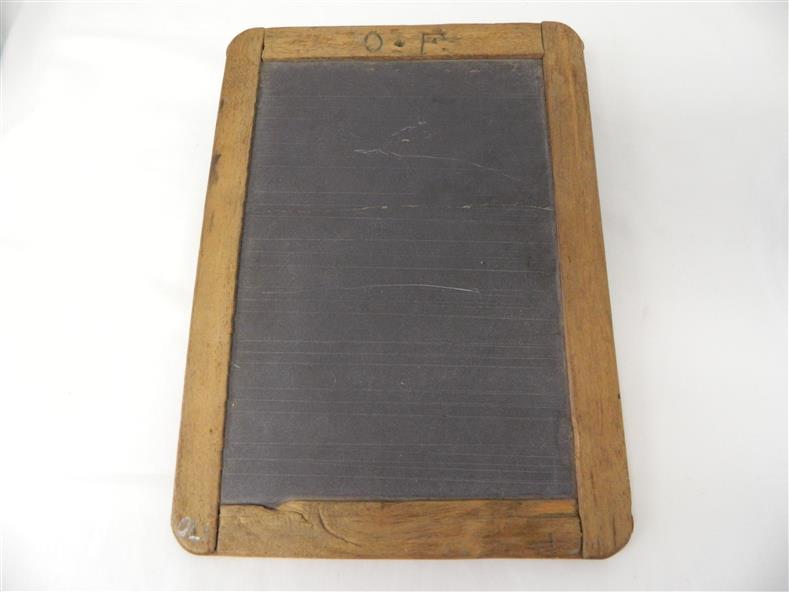

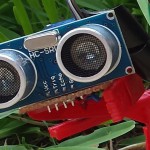 If your school or homeschool group is based in our around the Brisbane area, we can visit with our robotic caterpillar and other critters as part of our FREE
If your school or homeschool group is based in our around the Brisbane area, we can visit with our robotic caterpillar and other critters as part of our FREE 
 OpenSTEM’s
OpenSTEM’s  Student engagement is the primary aim of this curriculum implementation and a range of
Student engagement is the primary aim of this curriculum implementation and a range of  The
The  OpenSTEM’s History and Geography program provides a range of cross-curricular options. In particular Science extensions are provided to address the Science curriculum. Some aspects of the Mathematics curriculum also follow naturally from this material.
OpenSTEM’s History and Geography program provides a range of cross-curricular options. In particular Science extensions are provided to address the Science curriculum. Some aspects of the Mathematics curriculum also follow naturally from this material. Homeschooling parents also have great flexibility in their use of this material. The program is designed to be easily adaptable for the homeschooling situation. Parents can choose to use the resources within their own program, or allow the student to explore the material as their interest leads them. Alternatively, the parent can use the Teacher Handbook and Student Workbook to provide a series of lessons, knowing they will thus match all the curriculum requirements.
Homeschooling parents also have great flexibility in their use of this material. The program is designed to be easily adaptable for the homeschooling situation. Parents can choose to use the resources within their own program, or allow the student to explore the material as their interest leads them. Alternatively, the parent can use the Teacher Handbook and Student Workbook to provide a series of lessons, knowing they will thus match all the curriculum requirements.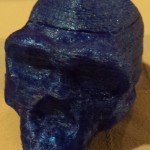 Open source has opened up huge opportunities for archaeologists. As well as high quality tools for research, we can use open source to engage kids with the past. Addressing the new National Curriculum, we use 3D printed fossil skulls and replicas of archaeological material to give kids a hands-on experience, making the past Funky and Fun!
Open source has opened up huge opportunities for archaeologists. As well as high quality tools for research, we can use open source to engage kids with the past. Addressing the new National Curriculum, we use 3D printed fossil skulls and replicas of archaeological material to give kids a hands-on experience, making the past Funky and Fun!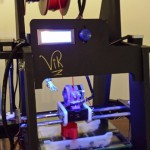 Archaeologists are usually very good at sharing knowledge with each other and the wider world. Under Creative Commons licences many files are made available, including scans of fossil skulls, artefacts and other archaeological material. Using a suite of open source tools, including a 3D printer, a series of interactive experiences for school children has been developed allowing them hands-on involvement with this material.
Archaeologists are usually very good at sharing knowledge with each other and the wider world. Under Creative Commons licences many files are made available, including scans of fossil skulls, artefacts and other archaeological material. Using a suite of open source tools, including a 3D printer, a series of interactive experiences for school children has been developed allowing them hands-on involvement with this material.
My grade 4 son played this with me a few times, his feedback was it was too easy but fun,…
Brad